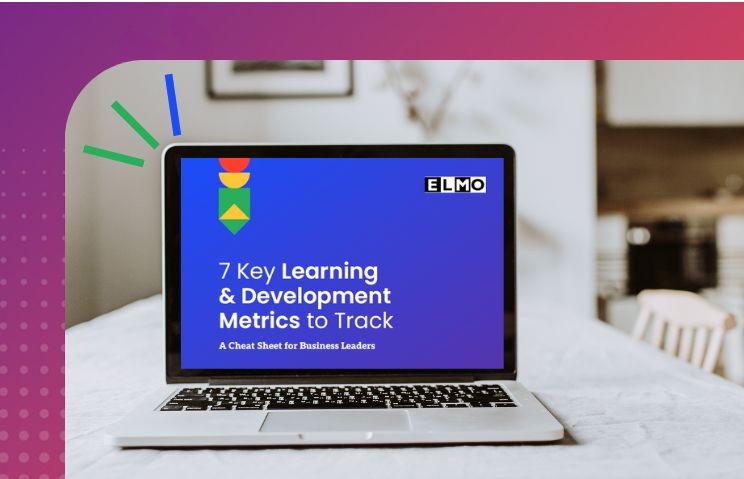Getting HR Processes Right from the Start
With uncertainty over our health, the economy, and how the world would rebound from the global pandemic.

It has not been an easy task for the HR industry. With no rulebook to follow, it has been the job of HR professionals to forge a path ahead in the middle of such instability. Despite the lifting of lockdowns and most COVID-19 regulations, a sense of uncertainty remains in 2023. The fear of a recession still looms, forcing many organisations to proceed with caution.
Many business leaders are cautious about rapid growth – some would prefer a ‘steady as she goes’ approach until conditions improve and COVID-19 recedes into the background. However, there are still many sectors and organisations in growth mode and trying to deal with the natural ‘growing pains’ that come with that.
Handling growth can be one of the biggest challenges for a business, even more so than obtaining funding or establishing a unique selling point.
You may scoff when you hear the words ‘we grew too fast’ – as if rapid growth is not something desired by every business – but too many businesses come undone by their own ambition.
In these cases, organisations misjudge their ability to maintain their pace and it often proves too much for them to handle.
Often, employee and client relationships are damaged before the bottom line is affected.
Mishandling HR isn’t just a company issue; it can play out in the public arena and shine a negative light on the business. The danger has been played out in recent media: harassment lawsuits, underpayment cases, and damage to brand and reputation.
The business lifecycle
The challenge for HR professionals is being able to identify which stage a business is in, and what needs and opportunities businesses have at each stage.

1. The seeding stage
At this point, your business has yet to become operational and is likely more like a concept. For many entrepreneurs, this stage occurs when they identify an intersection between a market opportunity and a particular passion or skill they have.
- Coming up with a solid business plan
- Understanding the costs involved
- Comprehending the possible market and profitability of the business
2. Startup stage
You realise that the business has potential and you start setting up the administrative side of things: bank accounts, company numbers, marketing materials, etc. Most importantly, you begin approaching potential clients or customers. If you’re developing a product on your own, you might prepare that product for sale by building a prototype. To support this, businesses onboard the first employees at this point, and the culture of the organisation starts presenting itself.
3. Growth and expansion
Sales are happening, you’re beginning to hire more people – the business matures from a scrappy startup where everyone’s roles are broad and vague, into a professional outfit with distinct workflows, and job descriptions, and where the chief executive can step back from the day-to-day operations. This is also the stage where companies are in danger of losing their focus.
Tied up in the red tape of inbound revenue and payrolls, being opportunistic and pivoting isn’t as easy as it used to be. However, as money rolls in, so does the chance to explore ideas you previously had to put on the back burner.
4. Maturity
A mature business has reached a point where it has a dedicated customer following, is a well-known brand in its industry, and where growth has slowed to a steady pace. It might not sound as exciting as an early-stage startup, but it’s likely to be more profitable.

Common business challenges
Each of these stages has its own distinct set of challenges, which often require different personalities and skill sets to tackle them.
Challenges at the seeding stage
- Is this business idea viable?
- How big is the total assessable market of my business idea?
- Is this idea possible given my geography, legal constraints, funding source, and skill set?
- What competitors am I going up against?
- How much money will this business take to get started?
- Will I be able to run this business myself, or will I need to find other people?
- Understanding the costs involved
Challenges at the startup stage
- How am I going to obtain funding for this business idea?
- Should I approach a bank, or will investors such as private equity help me get it off the ground?
- How can we develop our products or services quickly and bring them to market?
- How do we market ourselves to stand out from competitors?
- Who are the first people I should hire to make this business a reality?
- How will we pivot to a new idea if too much legal red tape stalls our progress?
Challenges at the growth stage
- How am I going to make sure we maintain our level of performance as we hire more people?
- How are we going to maintain a consistent cashflow?
- How will we balance our revenue to grow new areas while fulfilling day-to-day operations?
- We are growing into new areas – are these the right areas to focus on?
- Which areas of the business are less profitable than others? Why? Do we want to abandon those?
- Do we want to expand into new geographies?
- How do we plan and prepare for that? Am I or the other co-founders the right leaders for this business, or does it need a fresh perspective to progress to the next stage?
Challenges at the maturity stage
- As we grow, how will we be able to respond to market forces and remain competitive?
- Are we becoming too slow and sluggish?
- How do we streamline our processes?
- How frequently do we assess it?
- Are we attracting the right talent for our key areas to become leaders in our field?
- How do we explore new areas for business growth while staying true to our core values?
Each stage of growth clearly requires a new mindset. However, the underlying theme across these stages is constant: you need people to grow. People need support and an atmosphere that lets them thrive.
Getting HR right
Compliance: The sheer volume of laws regarding wages, entitlements, and industrial relations can be a minefield for new founders. Recent underpayment cases making their way into the media clearly show how important it is to understand HR obligations from day one.
Lawsuits: Proper policies or procedures about harassment or bullying ensure people feel safe at work. While that might not matter for businesses run only by its founders, staff numbers grow and as it does, different personalities can collide. Policies and procedures relating to workplace health and safety (WHS) is another core area that cannot be ignored.
Inability to retain good people: People like to work in areas they feel safe. HR procedures and processes create comfortable, safe environments, which are necessary for employees to thrive. Just as critically, employees need professional development and clear career paths, otherwise they will jump ship. It should be noted that all these factors influence how attractive an employer is to candidates, so it’s not just about retaining great people; it’s also about recruiting them.
“It costs a business two-and-a-half times one person’s salary to replace them. Retaining staff is hugely important, and the number one reason why people leave is because of their manager.” – David Wurth

HR Problems – and solutions – for every stage of growth
To negate most of these issues, experts agree it’s best to formalise HR policies from the get-go.
As a starting point, businesses can easily start this by distributing starter guides from the Australian Fair Work Ombudsman or Employment New Zealand websites. These guides provide a baseline for processes and procedures in the workplace.
1. The beginning: HR at the early stages
Both Wurth and Peppard say common issues can be traced to this point, where founders are often lulled into a false sense of security and time because of the small number of employees.
For example, entitlements and wages are a huge problem: startups and small businesses shouldn’t assume they don’t have to pay those, just because they’re small and don’t have the cash.
“There are obligations around minimum entitlements for employees,” Peppard says.
“[In Australia] business owners hear the words ‘Fair Work’, but many businesses don’t understand which awards govern which contract. It’s more than just minimum pay rates; there are entitlements to breaks, use of a phone, car, and so on. Startups mistakenly say they can’t afford that so they ignore it – but they can’t.”
According to Peppard, many businesses also mistakenly believe they can just hire an ‘intern’ to avoid payment; instead, companies incorrectly claim they were providing “an opportunity for that intern to learn”.
Even in these cases, however, Peppard says “they still have to pay”.
Another struggle for early-stage businesses is understanding the difference between an employee and a contractor. In Australia, the two are very clearly defined by the Fair Work Ombudsman, and businesses need to abide by them – which means paying correct entitlements. Employment New Zealand also outlines the differences in rights and responsibilities for employees vs. contractors.
“You need to work out the legal documentation and identify that employment status from the very beginning.” – David Wurth
2. Expansion and growth: HR challenges for mid-size businesses
When businesses begin to grow, these experts say new HR challenges come in two forms: processes and policies that deal with how people interact, and management practices.
Both experts say the first can be solved very simply by creating thorough policies for bullying, harassment, whistleblowing, and so on.
By creating a source of truth for how things should be done, HR issues won’t get in the way of business growth, she adds. “The sooner you do that, the better.”
The second problem – management – is a hangover from the earliest stage. When searching for talent, businesses usually employ people who are good at specific tasks. As the business grows, those employees are promoted to management.
To complicate the matter, retaining people is critical to ensuring the business stays on track. Therefore, establishing good management practices means once again creating solid position descriptions, with an emphasis on the technical skills of management.
Overall, processes at this stage need to start promoting healthy workplace interactions – particularly when personalities and views differ. Good managers encourage those critical discussions to occur without forcing people to leave.
Without these skills, businesses also put themselves at risk of facing bullying and harassment claims, Peppard says.
3. Solid and steady: Ensuring healthy long-term HR
The next challenge is knowing when to bring on a full-time HR professional.
While a chief executive or founder becomes the default HR representative, the natural influence founders have on the workplace culture will overflow into the processes and procedures as well.
Hiring a full-time employee then becomes critical to ensuring the culture is maintained during expansion, Wurth says.
The tech talk
Like with all business processes, technology plays a significant role at every stage of the business lifecycle. For HR and payroll in particular, our experts suggest that each stage requires a different set of tools as you grow.
The startup stage
Businesses won’t have many payroll requirements, so any HR technology will be to manage teams or simplify processes, such as rostering.
There are several different types of online rostering and scheduling tools available, and many of them are attached to different accounting software packages.
However, Wurth points out that many businesses will want to investigate their own payroll solution. Many digital payroll systems scale easily with new team members and preparing for future growth from the start can save a lot of headaches later on. To find out how ELMO company can help your business from its earliest stages, click here.
Expansion and growth
Businesses need to integrate more features and end-to-end HR solutions to cover the entire employee lifecycle before it reaches maturity, so adding hundreds or potentially thousands of employees doesn’t become a burden later on.
As businesses start hiring more people and payroll starts expanding, a robust system needs to be implemented, capable of managing information across payroll such as rostering, employee profile data, leave and attendance, performance management, remuneration, and training.
Maturity
As businesses reach maturity, all HR and payroll systems will need to have self-service built in, so employees and managers can look up critical information and policies and update their own personal records as required. Placing this responsibility on employees ensures they’re aware of all the processes and policies.
HR technology at every business stage
While navigating the HR responsibilities can be a minefield, businesses stay on top by implementing policies as soon as possible and, when appropriate, integrate their policies with technology. That way, the HR department will scale alongside the business and be a key contributor to your success, instead of holding you back.
HR at the startup stage
Business challenges:
- Finding funding to continue to grow
- Developing products to go to market
- Creating a marketing strategy
- Finding dedicated early staff members
HR challenges:
- Creating policies for early employees
- Making sure new personalities can get along
- Creating solid job descriptions
- Ensuring staff are paid accurately and legally
Tech solutions:
- Rostering solutions
- Scheduling, time, and attendance software
- Payroll software
Who’s in charge?
- Founder or chief executive
HR during expansion
Business challenges:
- Maintain a level of performance during growth
- Growing and maintaining cashflow
- Moving and growing into new areas while staying profitable
- Understanding if founders are best suited to lead the business
HR challenges:
- Does the business have the right managers?
- Does the business have a scalable payroll solution?
- Are staff given access to important information such as payroll?
- Are policies clearly documented and distributed?
- Are there procedures to follow up on HR complaints?
Tech solutions:
- A system that integrates HR, payroll, rostering, time, and attendance able to cover every employee touchpoint, from ‘hiring to retiring’
Who’s in charge?
- A dedicated HR director
HR at maturity
Business challenges:
- How can we respond to market forces and remain competitive?
- Are we becoming too slow and sluggish?
- Are processes as efficient as they could be? Can we still work quickly?
- How do we explore new areas for business while staying true to our core values?
HR challenges:
- Are we attracting the right talent for our key areas?
- Are we a leader in our field?
- Do staff feel supported to resolve conflicts?
- Are we able to support people of different personalities?
- Is our HR system robust enough to allow people self-service?
- Is our system scalable enough, and reliable?
Tech solutions:
- A system that integrates HR, payroll, rostering, time, and attendance able to cover every employee touchpoint, from ‘hiring to retiring’
- Scalable systems with 24/7 mobile and app access
- Self-service portals for employees and managers
- Learning and development portals
Who’s in charge?
- Dedicated HR manager or director, plus multiple HR officers depending on the number of staff
Questions to ask your tech vendor about scalability and customisation
Your HR technology solution should be able to scale up as your business grows and the demands on your HR team escalate. Payroll is often the starting point for many smaller businesses, but as employee numbers increase, you may require recruitment and onboarding, succession, learning, and performance management solutions. The system should also be configurable and customisable to your internal HR processes, workflows, and specific needs. Here are some questions to ask your vendor:
- Can the vendor adapt to your changing needs and scale up as your organisation grows?
- Is it an out-of-the-box solution that is ready to go and fully set up once installed?
- Alternatively, is it a configurable software-as-a-service (SaaS) solution which can be tweaked or configured to handle additional fields (widgets) and screens?
- Does the solution offer different workflow processes and procedures in addition to what comes with the default settings?
- As a customer will you have insight to product roadmaps for future enhancements and developments?
The HR challenges – and opportunities – in a fast growth tech company
Brand management
As consumers and employees’ voices gain prominence in public arenas, businesses need to protect their brands in both physical spaces and online.
It can also affect the way businesses recruit suitable talent, who can not only grow with the business as it scales, but also fit with the workplace culture.
Data protection
Although policies and management strategies update infrequently, data protection frameworks need to be adjusted regularly to protect sensitive information.
Failing to monitor the health of your business’ online security measures can result in legal and branding challenges down the track.
Advice for businesses facing these challenges
Always encourage businesses to work on communication, which will offer some level of protection to the brand’s reputation.
Regardless of your organisation’s stage of growth, ELMO Software is on the journey with you. We understand the challenges you face and the opportunities you will encounter. As a cloud-based, modular software solution, ELMO is designed to grow with your business. From start-ups to SMBs, right through to enterprise-sized organisations, the ELMO group helps organisations manage their people, process and pay throughout the employee lifecycle, from ‘hire to retire’. They can be used together or stand-alone, and are configurable according to an organisation’s unique processes and workflows. Automate and streamline your operations to reduce costs, increase efficiency and bolster productivity.
 HR Core
HR Core 









